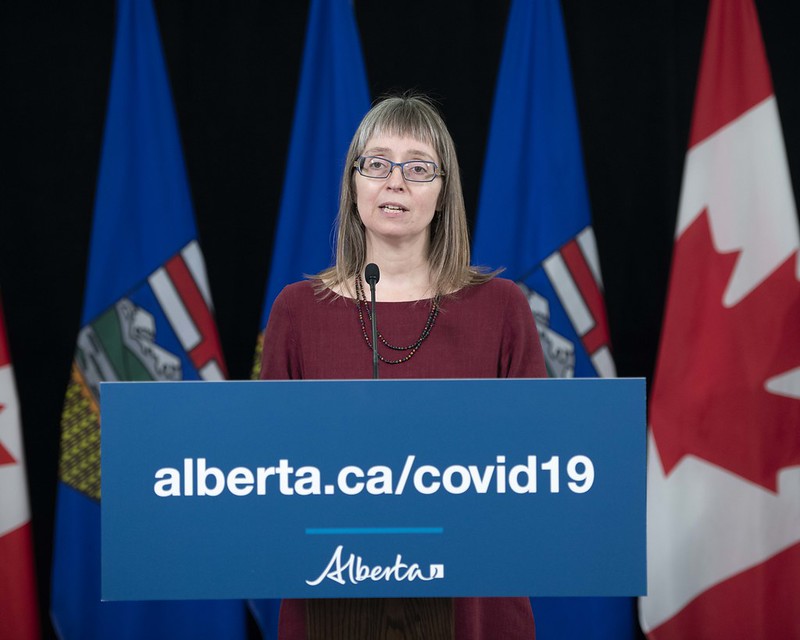Researchers from the University of Alberta have been combing through publicly available data and information to determine how the province communicated during the start of the COVID-19 pandemic.

One of the main sources they analyzed was the daily updates from Dr. Deena Hinshaw, Alberta’s Chief Medical Officer of Health.
“At the time, there was great uncertainty about the virus,” Cheryl Poth said.
“The reports, at the time, as well as now, describe these briefings and Dr. Hinshaw’s approach as effective, because they were perceived as credible and trustworthy, and as researchers, we wanted to know why.”
Poth is a measurement, assessment and evaluation professor at the University of Alberta.
She and her colleague, Simon Otto, an assistant professor in public health, said Hinshaw has been strong and effective in her communications, as Alberta’s face for COVID-19 information.
They believe Alberta’s messaging during the first three months of the pandemic was effective for a number of reasons:

Get weekly health news
1. Otto said Hinshaw communicated clearly about topics like flattening the curve and explained why each action was being taken. Those actions were also similar to ones being taken not just across Canada, but around the world.
“She used data to rationalize the control measures put in place and we always had insight into how the risk assessments were done and decisions were made,” he said.
2. The researchers said the human element of the messaging was ideal.
“Dr. Hinshaw always demonstrated empathy and delivered the message in a way that built rapport with the public,” Otto said.
They pointed to a period where Hinshaw conducted the briefings from her own home when she had symptoms and showed it can happen to anyone.
“There seemed to be so much information going around, it seemed to be a go-to, trusted source of information. I think she was helping us make sense of a very chaotic time,” Poth said.
3. Poth and Otto say Hinshaw has been calm and consistent in her delivery, and that the messaging was aligned across all platforms.
“Despite the findings being overall negative, the tone impact was positive, which we feel is very important for the public uptake of the messages,” Poth said.
Now that the updates are no longer daily, it’s harder for people to remember when they’ll get their next update, and Poth noted that’s challenging.
Otto explained it’s a bit of a balancing act.
“Daily messaging is very useful, I think, people expect it, they look forward to. But the other challenge is, you don’t want to be out there talking about something you talked about yesterday if not a lot has changed.”

The pair also reviewed news stories as part of their research.
They have one article being submitted for peer review already, and two others are still being worked on.
In the future, they may analyze how the coronavirus messaging changed over time but for now they said current communications are outside the scope of their research.
“It’s my belief that we’ll be studying these responses for a really long time, to learn from them,” Poth said.
“I still think Alberta is going to come out as a strong contender for a good response at the beginning… when we look globally.”












Comments